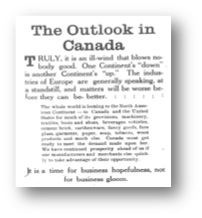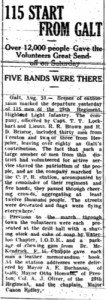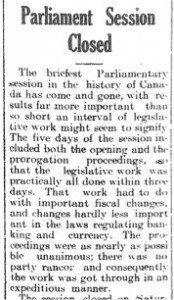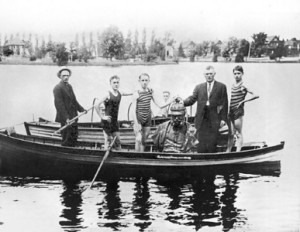Waterloo Region understood that the war would greatly benefit Canada’s economy, the Elmira Signet going as far as to say “one continent’s ‘down’ is another continent’s ‘up.’” Waterloo region’s factories plunged into wartime production almost immediately. Multiple Berlin and Waterloo industries received large orders from the Militia Department. Trunk companies, leather companies, boot and shoe firms, textile manufacturers and rubber companies in the region were among the many who received contracts across Quebec and Ontario.
An order for 7000 sets of Oliver equipment, 2000 rifle buckets and 5000 rifle slings were divided between the McBrine Company, the Berlin Trunk and Bag Company, and the Duering Trunk Company. Additionally, five boot and shoe companies in the Waterloo Region were to produce 20,000 pairs of shoes, while another company was to produce 10,000 service shirts. These orders needed to be filled within five weeks to secure a second contract with the Militia Department. By mid-August, the already bustling industries in the Waterloo Region were further stimulated by wartime demands.
(“The Outlook in Canada,” Elmira Signet, 27 August 1914; “Factories will be busy,” Waterloo Chronicle-Telegraph, 20 August 1914; “Industry Hysteria,” Waterloo Chronicle-Telegraph, 27 August 1914; “Factories will be busy,” Waterloo Chronicle-Telegraph, 20 August 1914; “Cannot buy German goods,” Berlin Daily Telegraph, 11 August 1914.)



